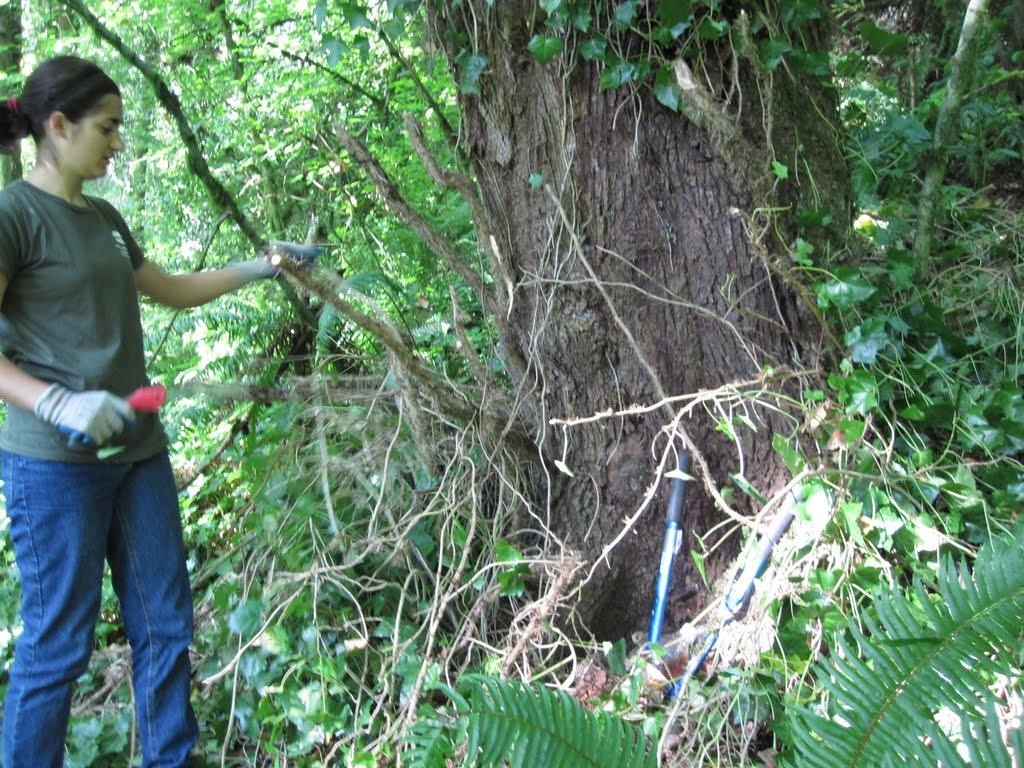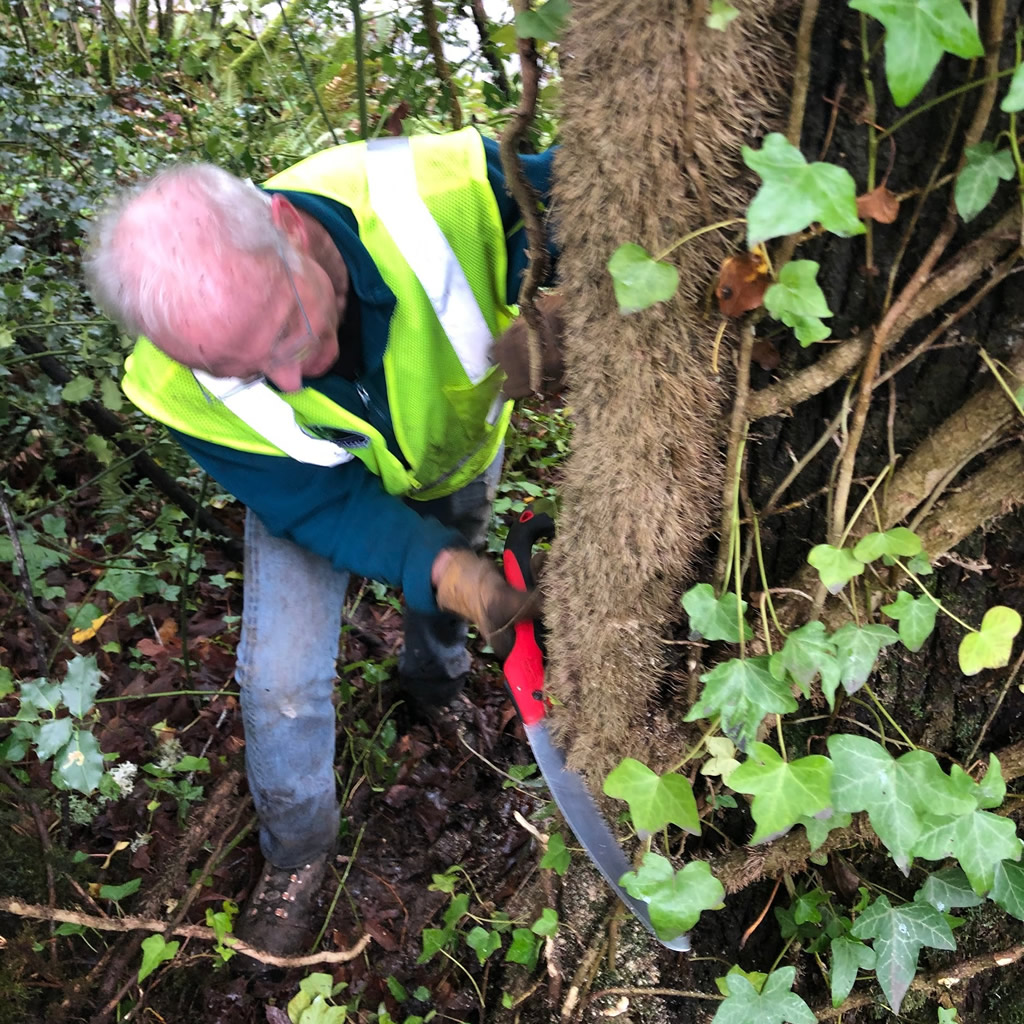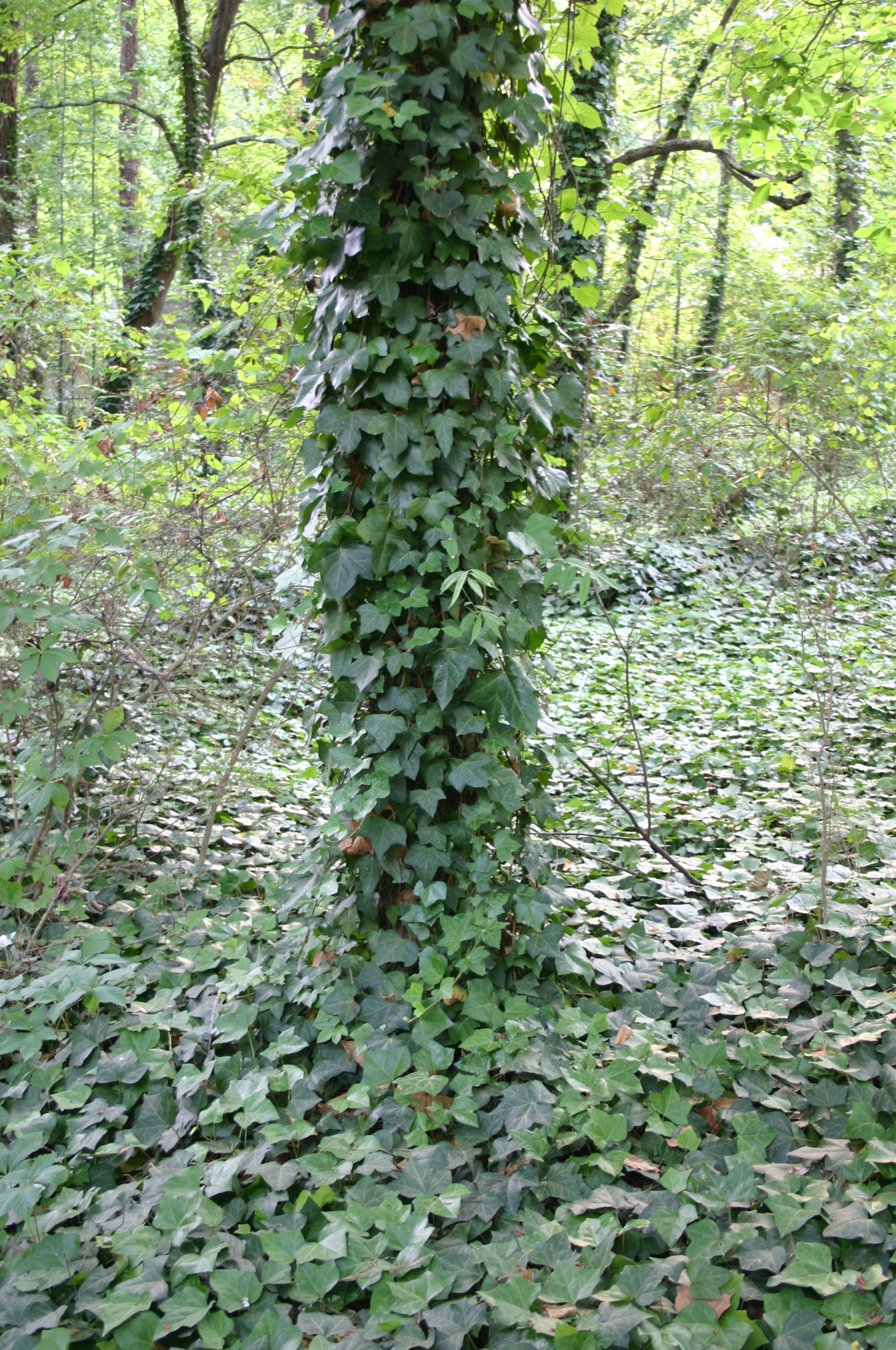Why is Ivy a Problem?
Glad you asked!Why are we removing ivy?
Atlantic Ivy (Hedera hibernica) and English ivy (Hedera helix) are plant species native to Eurasia, Northern Africa, and Macaronesia. Ivy can be easily identified by its distinct waxy evergreen leaves. Ivy was introduced to the Pacific Northwest as an ornamental plant valued for its rapid growth and aesthetic value. Over time, Ivy has escaped cultivation and spread throughout our forests, natural areas, and backyards. Ivy can rapidly invade natural areas, outcompeting and suppressing native plants, and thus altering ecosystem functionality. Of particular concern is Tree Ivy – ivy that climbs trees to access more light.
Ivy’s biggest advantage is its ability to climb trees. By using existing tree trucks for structure, Ivy can rapidly grow up trees to access light without expending energy on creating its own support structure. The problem? Ivy takes sun and water resources from trees. And, it’s heavy. If left unmanaged, mature tree ivy can break limbs and eventually topple large trees. By removing ivy, we can save our trees! If you’re interested in the science of ivy’s success, check out this great article https://tryoncreek.wordpress.com/2017/06/23/english-ivy-forest-invader/
Check out Portland Parks & Rec’s “Know Ivy” info pamphlet as well as their website for more great studies on the nuances of English ivy and the role humans play in both spreading and managing it: https://www.portland.gov/parks/nature/know-ivy-league
Where can I remove Ivy?
What tools do I need to remove Tree Ivy?
- Work Gloves
- Hand Clippers or Loppers
- Pruning Saw (for large ivy vines)
- A camera (optional). Take before and after photos and share your work on social media using the hashtag #LOTreeHero
If you don’t have these tools, ask a neighbor if you can borrow theirs! Or contact jack@oswegowatershed.org and we can lend you tools.
How Do I Remove Ivy?
“GIRDLE: The most basic technique to stop tree-climbing ivy dead in its tracks.
Once you have located a tree with ivy, use either loppers or a pruning saw to cut through each vine clinging to the tree trunk at shoulder height and at ankle height. This severs the connection between the life-sustaining roots and the rest of the ivy. Be sure to cut ALL vines as even one can continue to nourish ivy higher up the tree. Strip the Ivy away from the tree between the two cuts – some vines can be so big that you need to pry them away from the tree – just be careful not to damage the bark. Toss the stripped section of vine or save one or more as a trophy – how will your friends believe that you cut away a vine as big as your arm without the proof? Recheck the ‘girdled’ area for any thin vines which may have grown under the tree’s bark and you’re finished. But, after all that work, you don’t want to give ivy a head-start by leaving it to grow next to the base of the tree.
FULL LIFESAVER: After girdling the ivy from a tree, work to clear the surrounding ground ivy
Imagine a 6-foot radius circle around the target tree, begin by peeling back the ivy mat 6 feet from the tree and thoroughly pulling every vine and root from the circle.
You may also find it helpful to cut “lines” in the ivy mat within your imaginary circle and rip out ivy like a piece of pie. Cutting “lines” in the dense mat allows for precision removal around delicate plants and immovable obstacles. You will save more time and energy pulling around rather than through these obstacles. If you are working on a slope, pull downhill and let gravity work with you and The keys to an effective Lifesaver are consistency and patience; all vines and roots must be removed.”
Ivy removal methods in this article are from No Ivy League’s extensive website on Ivy removal. Want to learn more about invasive ivy removal? Check out their website:



Now that you’re an ivy removal expert, you can go out and remove ivy! Be sure to only remove ivy on property that you own, or if you have explicit permission to remove ivy there! Take before and after photos, and share your progress on social media. Include the hashtag #LOTreeHero so we can see your work. There is a lot of tree ivy out there, and no hero can protect the entire urban forest alone- encourage your friends and neighbors to be urban forest heroes by removing ivy on their trees, too! If you don’t have social media, you can email your photos to allie@oswegowatershed.org and we will share the photos for you. Thank you so much for stewarding our urban forest!
Want to do more stewardship work in Lake Oswego? Check out our event page and sign up for an upcoming volunteer event!

